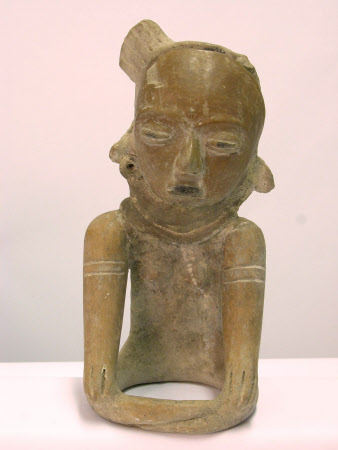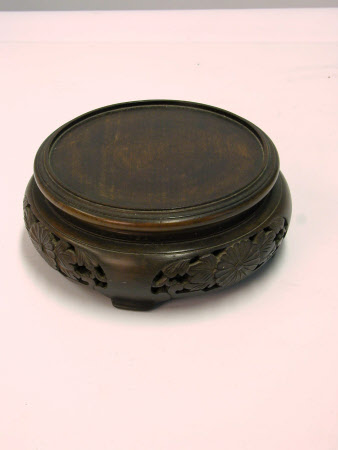A seated figure
Category
Ceramics
Date
c. 300 BC - c. 500 AD
Materials
Earthenware
Measurements
240 x 120 x 100 mm
Place of origin
Nayarit, Mexico
Order this imageCollection
Greenway, Devon
NT 120524
Caption
The Western Mexican shaft tomb tradition is a mortuary practice and culture which existed in the regions of Nayarit, Jalisco, and Colima from around 300 BCE to 500 CE. Grave goods such as ceramic figures, jewellery, pottery, stones and shells were among the artefacts placed within shaft tombs. These tombs were routinely looted and almost all known Nayarit figurines were acquired through illicit means. They became particularly desirable from the 1930s when the modernist artists Frida Kahlo and Diego Rivera began to collect them.
Summary
Earthenware, a seated ancestor figure, Nayarit, Western Mexico, of unknown pre-colonial date (c. 300 BCE-500 CE). A Nayarit shaft tomb ancestor figure of modelled and incised earthenware, this figure assembled or reassembled from fragments probably as the result of illegal looting. Mounted on a circular turned and carved hardwood base.


